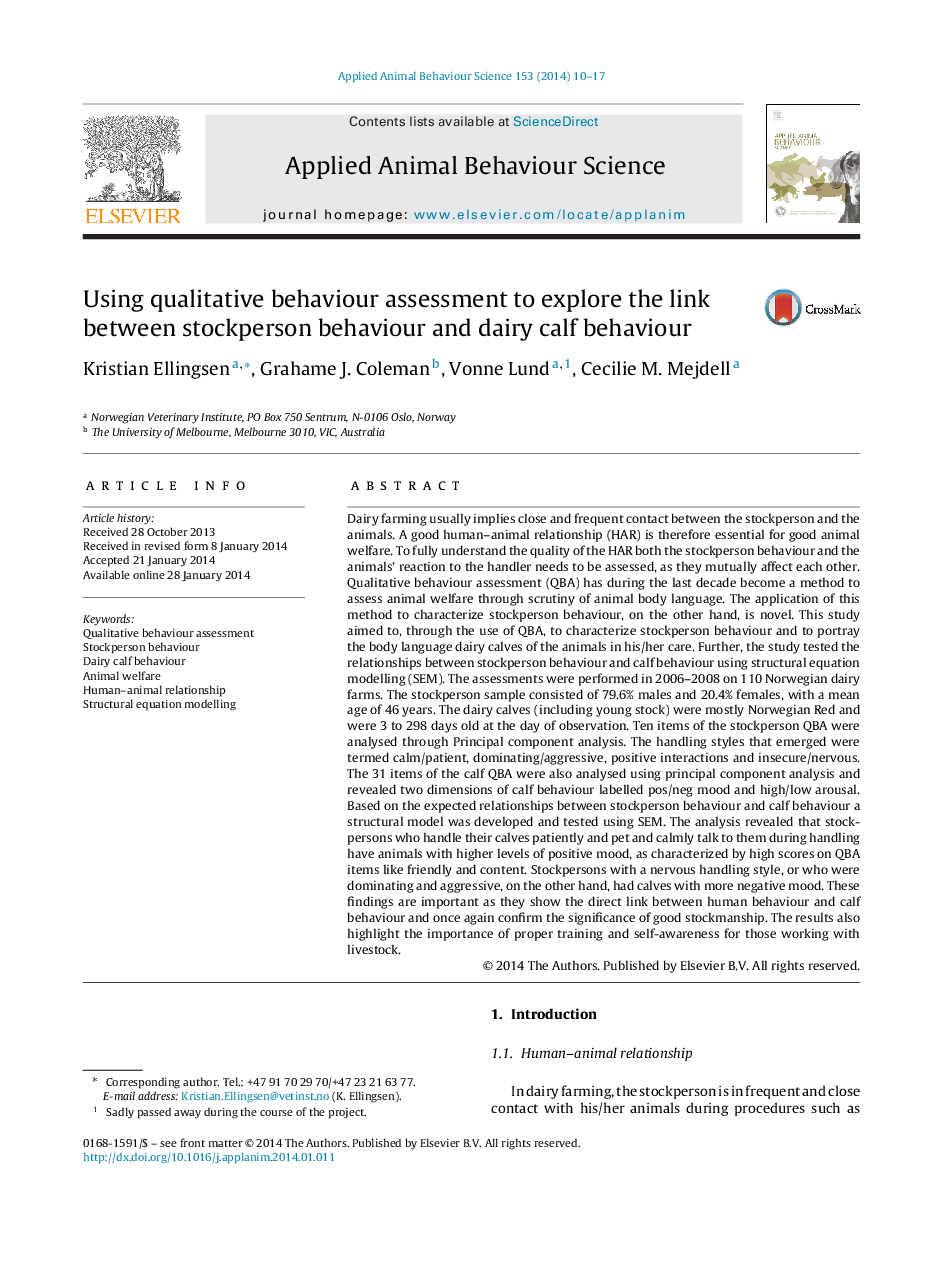| Article ID | Journal | Published Year | Pages | File Type |
|---|---|---|---|---|
| 6379710 | Applied Animal Behaviour Science | 2014 | 8 Pages |
Abstract
Dairy farming usually implies close and frequent contact between the stockperson and the animals. A good human-animal relationship (HAR) is therefore essential for good animal welfare. To fully understand the quality of the HAR both the stockperson behaviour and the animals' reaction to the handler needs to be assessed, as they mutually affect each other. Qualitative behaviour assessment (QBA) has during the last decade become a method to assess animal welfare through scrutiny of animal body language. The application of this method to characterize stockperson behaviour, on the other hand, is novel. This study aimed to, through the use of QBA, to characterize stockperson behaviour and to portray the body language dairy calves of the animals in his/her care. Further, the study tested the relationships between stockperson behaviour and calf behaviour using structural equation modelling (SEM). The assessments were performed in 2006-2008 on 110 Norwegian dairy farms. The stockperson sample consisted of 79.6% males and 20.4% females, with a mean age of 46 years. The dairy calves (including young stock) were mostly Norwegian Red and were 3 to 298 days old at the day of observation. Ten items of the stockperson QBA were analysed through Principal component analysis. The handling styles that emerged were termed calm/patient, dominating/aggressive, positive interactions and insecure/nervous. The 31 items of the calf QBA were also analysed using principal component analysis and revealed two dimensions of calf behaviour labelled pos/neg mood and high/low arousal. Based on the expected relationships between stockperson behaviour and calf behaviour a structural model was developed and tested using SEM. The analysis revealed that stockpersons who handle their calves patiently and pet and calmly talk to them during handling have animals with higher levels of positive mood, as characterized by high scores on QBA items like friendly and content. Stockpersons with a nervous handling style, or who were dominating and aggressive, on the other hand, had calves with more negative mood. These findings are important as they show the direct link between human behaviour and calf behaviour and once again confirm the significance of good stockmanship. The results also highlight the importance of proper training and self-awareness for those working with livestock.
Keywords
Related Topics
Life Sciences
Agricultural and Biological Sciences
Animal Science and Zoology
Authors
Kristian Ellingsen, Grahame J. Coleman, Vonne Lund, Cecilie M. Mejdell,
